Related Research Articles
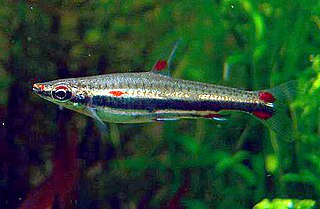
Nannostomus,, is a genus of fish belonging to the characin family Lebiasinidae. All of the species in this genus are known as pencil fish or pencilfish, a popular name that was first only applied to two species in the 1920s, Nannostomus unifasciatus and Nannostomus eques, but by the late 1950s would come to be applied to all members of the genus. Several of the species have become popular aquarium fish due to their attractive coloration, unique shape, and interesting demeanor.
Bulimulus unifasciatus is a species of tropical air-breathing land snail, a pulmonate gastropod mollusk in the subfamily Bulimulinae.
Nannostomus harrisoni,, is a species of pencil fish. Native to The Guianas, the species displays a single horizontal stripe of intense black, and blood red adornments on its fins. N. harrisoni is often confused with Nannostomus unifasciatus, another long, slender, single-striped species with similar profile and coloration, but N. harrisoni swims in a horizontal posture, as opposed to the snout-up oblique posture of N.unifasciatus, and the bright red adornments on the ventral fins of N. harrisoni are absent in N. unifasciatus. Though the recently described species N. grandis has been dubbed the largest member of the genus, adults of N. harrisoni commonly grow to a length of 70 mm, making it in fact the largest species of pencil fish described to date. It is commonly known as Harrison's pencilfish.
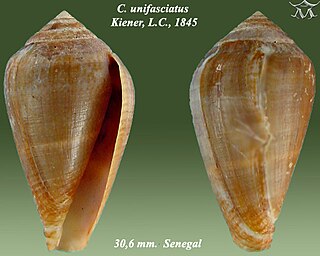
Conus unifasciatus is a species of sea snail, a marine gastropod mollusk in the family Conidae, the cone snails and their allies.

Tritia unifasciata is a species of sea snail, a marine gastropod mollusk in the family Nassariidae, the Nassa mud snails or dog whelks.
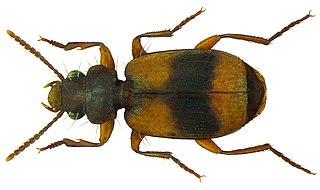
Somotrichus is a genus of beetles in the family Carabidae, containing the following species:
Lissonotini is a tribe of beetles in the subfamily Cerambycinae, containing a single genus, Lissonotus, and the following species:
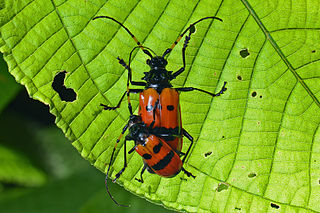
Sternacanthus is a genus of beetles in the family Cerambycidae, containing the following species:
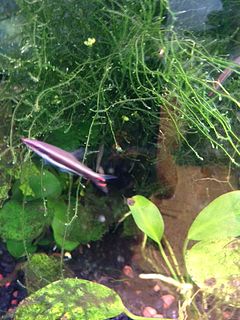
Nannostomus unifasciatus,, commonly known as the one-lined pencilfish, is a freshwater species of fish belonging to the genus Nannostomus in the characin family Lebiasinidae. They are popular in the aquarium trade due to their small size, beautiful color pattern, unique swimming posture and relative hardiness. With its long, pencil-shaped profile, its single jet black stripe reminiscent of the graphite core of a pencil, and its eraser-colored caudal fin, this is the species for which the popular name, 'pencilfish', was first coined in the 1920s, later to be applied to all the species of the genus Nannostomus.

Temnothorax unifasciatus is a species of ant in the subfamily Myrmicinae.
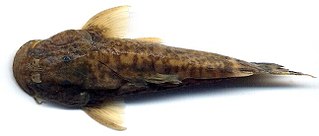
Astroblepus unifasciatus is a species of catfish of the family Astroblepidae. It can be found in Colombia.
Similosodus is a genus of longhorn beetles of the subfamily Lamiinae, containing the following species:

Rhopaloscelis unifasciatus is a species of beetle in the family Cerambycidae. It was described by Blessig in 1873. It is known from Mongolia, Russia, China, Japan, North Korea, and Kazakhstan.
Eurycallinus unifasciatus is a species of beetle in the family Cerambycidae. It was described by Stephan von Breuning in 1947. It is known from Mexico.
Similosodus unifasciatus is a species of beetle in the family Cerambycidae. It was described by Maurice Pic in 1934, originally under the genus Sodus.
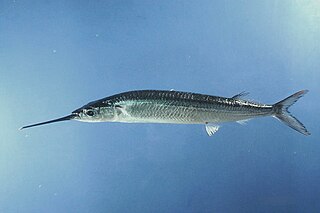
Hyporhamphus unifasciatus, the common halfbeak or the Atlantic silverstripe halfbeak, is a bony fish in the family Hemiramphidae. It is found in the subtropical western Atlantic Ocean and the Gulf of Mexico. It is a common fish and not used for food to any great extent, and the International Union for Conservation of Nature has listed its conservation status as being of "least concern".

Polymerus unifasciatus is a species of plant bug in the family Miridae. It is found in Europe and Northern Asia, North America, and Southern Asia.

Phyllobaenus unifasciatus is a species of checkered beetle in the family Cleridae. It is found in North America.

Leith Hill SSSI is a 337.9-hectare (835-acre) biological Site of Special Scientific Interest south-east of Dorking in Surrey. The SSSI consists of four wooded areas surrounding Leith Hill.

Entypus unifasciatus is a species of spider wasp in the family Pompilidae.
References
- ↑ Biolib.cz - Chaetacanthidius unifasciatus. Retrieved on 8 September 2014.